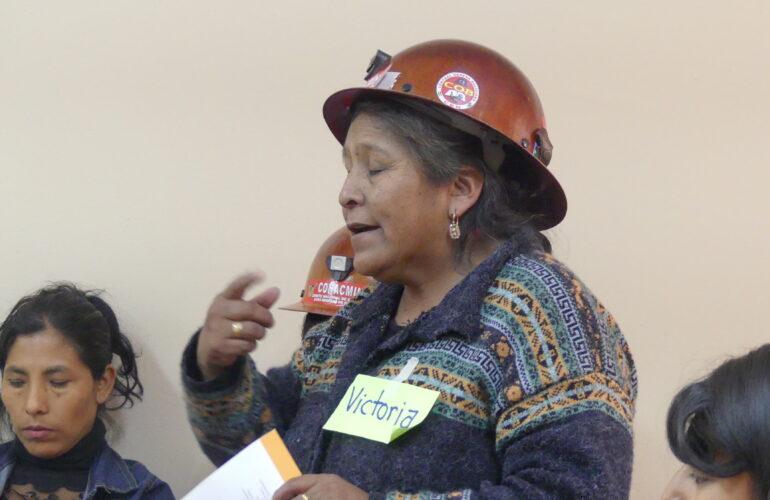Women miners will request a census and policies for their sector to candidates
After a process of reflection and diagnosis – the results were expressed in an institutional document – the National Network of Women in Mining (NNWM) will submit its sectoral proposals to candidates and partner institutions to develop effective public policies for these workers soon..
During the debate Women Miners Fighting for their Rights, which will be held on October 6 via Zoom and Facebook, different NNWM representatives will present their sector’s reality in health, education, environment, working areas, and, in particular, gender-based violence.
They will also explain to the media and candidates in mining provinces the urgent need to address these aspects and the urge of organizing a census to learn about the number of women working differently in the mining sector. These actions will facilitate the implementation of appropriate policies from national, regional, and local bodies.
Women miners and their condition
While the exact number of women engaged in mining activities is unknown, an estimated 30% of miners are women. However, their work has poor public visibility, and their economic, social, or family contribution receives little recognition. This happens even in their productive organizations and residency communities.
Also, women miners are, to this day, victims of discrimination in various fields, including labor and politics, and sexist violence due to persistent patriarchal models in society.
Mining work, by its nature and peculiarities, is used for the implementation of discriminatory practices towards women as considering that this activity is “for men only.” The economic factor has also led to gaps in the salaries between men and women in mining, while poor education and vocational training prevent them from learning about their social and labor rights.
In addition to this outlook – which increases women’s vulnerability – it is necessary to consider the precarious conditions in which women execute their work, particularly in small-scale artisanal mining and individual mining work.
Simultaneously, the poor technical conditions in safety and health common in a significant part of the mining industry become a bigger threat for women due to their vulnerability and circumstances related to their gender. That is why they are more likely to develop and catch occupational diseases, which are also not considered by inadequate health services.
Core ideas of the proposals
The analysis of the problems of women miners, conducted by the principal agents themselves, propose initiatives that should be implemented by government institutions through appropriate policies, as they are part of the field of work, the organization, and the exercise of the rights established in the Political Constitution of the Government (CPE) and current regulation such as the Comprehensive Law to Guarantee Women a Life Free from Violence No. 348 and the Law Against Harassment and Political Violence towards Women No. 243, among others.
In this regard, around 120 women miners analyzed and proposed solutions on their rights to health, decent work, education, a healthy environment, a life free from violence, and other issues.
In this way, during the debate, its representatives will explain the productivity issues in cooperative mining due to poor occupational health and safety conditions (SySO), the need for minimum technical requirements for work, the urge to improve health and education services, to exercise rights and end sexist violence and discrimination in labor organizations.
NNWM communication





